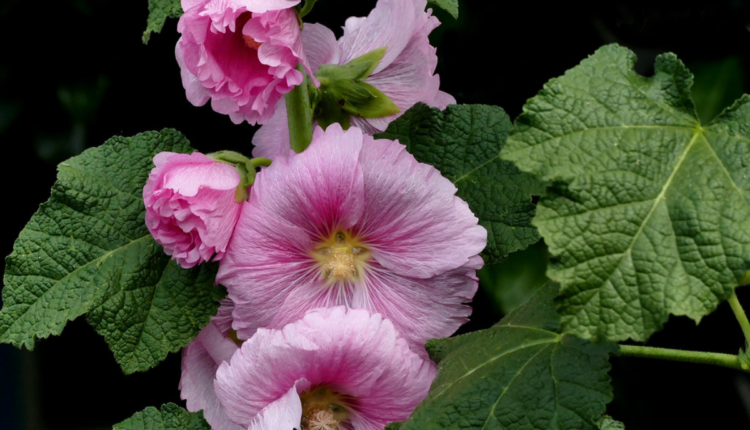Compared to traditional crops, the cultivation of plants with medicinal properties gives more profit. One such is the cultivation of Gulkhaira flower. Not only this, it also makes the soil more fertile. This is the reason that gradually the interest of farmers has increased in the cultivation of such plants. Gulkhaira, a plant with medicinal properties, is being grown on a large scale in Uttar Pradesh. Know about the cultivation of Gulkhaira flower.
Apart from the cultivation of traditional crops like wheat, paddy and maize, farmers are also turning towards the cultivation of other plants. One of these is the cultivation of medicinal plants. One such is the cultivation of Gulkhaira flower. Know important things about the cultivation of this flower.
Experts also say that by continuously planting the same crop in the field, the fertility of the soil decreases. In such a situation, if the field is empty after harvesting paddy or wheat, then plants with medicinal properties should be planted in it. There are two benefits of this, one is that the fertility of the soil will increase and the farmers will also get additional income.
Gulkhaira is a plant with medicinal properties, whose white, pink and purple flowers are very beautiful as well as full of medicinal properties. Gulkhaira flower is cultivated on a large scale in Pakistan and Afghanistan. Now, looking at its health benefits and profit, its cultivation has gradually started in India as well. Especially in Uttar Pradesh, Gulkhaira flower is being cultivated on a large scale.
Use of Gulkhaira flowers
Gulkhaira flowers can be used for decoration, because they are very beautiful, but apart from this, Gulkhaira flowers, leaves, stems etc. are also used in making Unani medicine. Medicine made from Gulkhaira flowers is also considered suitable in the treatment of cough, fever and other diseases.
When is sowing done in Gulkhaira flower cultivation?
The seeds of this beautiful flowering plant are sown in the month of November and the crop is ready by April-May.
Before sowing, the field should be cleaned by removing weeds.
When the Gulkhaira crop ripens, its leaves and stems dry up and fall in the field. Then they are collected.
Its specialty is that they do not spoil quickly, so they can be kept for many years after drying.
Once the Gulkhaira crop is obtained, farmers do not have to buy seeds again, because the plants produce seeds.
Climate for Gulkhaira flower cultivation
The Gulkhaira plant can grow in many climatic conditions. However, it prefers a temperate climate with moderate rainfall and sunlight. The suitable temperature for Gulkhaira flower cultivation is considered to be between 15°C to 25°C. Gulkhaira can grow in many types of soil, but well-drained sandy loam or clay loam soil with pH between 6.5 to 7.5 is considered good for its growth.
Seeds for Gulkhaira Flower Cultivation
The recommended seed rate for Gulkhaira cultivation is 5 kg per hectare. To prevent fungal infection, it is advisable to treat the seeds with fungicides like Captan or Thiram at the rate of 2 g/kg of seed before sowing.
Method of sowing seeds in Gulkhaira flower cultivation
Seeds should be sown in rows or beds at a depth of 1 to 2 cm by sprinkling or drilling method. In broadcasting method, seeds should be spread evenly on the prepared land. In drilling method, grooves or channels should be made in the soil and seeds should be put along them at regular intervals.
For Gulkhaira cultivation, a distance of 30 cm by 30 cm between plants and rows respectively is considered correct. This distance is considered better for plant growth, sunlight penetration, air circulation and weed control. In line sowing, it is appropriate to make rows with a distance of 30 cm to 45 cm and sow seeds at a depth of 1 cm to 2 cm with a distance of 15 cm to 20 cm within the rows.
Irrigation in Gulkhaira flower cultivation
Gulkhaira is a drought-tolerant plant that does not require much irrigation. It is important to provide adequate water to the plants during the crucial stages of germination, flowering and seed formation. Some tips for irrigation and water management are as follows:
Use drip irrigation or sprinkler irrigation to save water and prevent weeds.
Depending on soil moisture and weather conditions, irrigate the crop at an interval of 10-15 days.
Avoid waterlogging and overwatering, as these can cause root rot and fungal diseases.
Maintain soil moisture level of 60-70 percent throughout the crop cycle.
Market of Gulkhaira
Gulkhaira flower is in good demand among pharmaceutical companies. Sometimes dealers also enter into pre-harvest price agreement with farmers for the cultivation of this medicinal plant Gulkhaira flower.
There is not much cost in its cultivation, so it is a profitable deal for the farmers in every way. Farmers can cultivate Gulkhaira flowers along with traditional crops.
Earning from Gulkhaira flowers
Due to medicinal properties, there is a lot of demand for its flowers. You might be surprised to know that the price of one quintal of its flowers in the market is up to 10 thousand rupees and up to 15 quintals of flowers are produced from cultivation in one acre. That is, by cultivating in one acre, farmers can earn a profit of up to 1.5 lakh rupees only from flowers. Apart from this, additional income can be earned by selling seeds, leaves and stems. Gulkhaira plants can also be planted along with other crops.
Contact us- If farmers want to share any valuable information or experiences related to farming, they can connect with us via phone or whatsApp at 9599273766 or you can write to us at [email protected]. Through Kisan of India, we will convey your message to the people, because we believe that if the farmers are advanced then the country is happy.
You can connect with Kisan of India on Facebook, Twitter, and WhatsApp and Subscribe to our YouTube channel.



